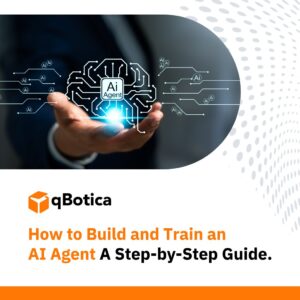Optimizing ROI is crucial for businesses aiming to maximize their returns from investments in automation and AI. Effective ROI management not only enhances profitability but also drives strategic decision-making, ensuring resources are allocated efficiently.
UiPath Insights, a powerful tool in the landscape of intelligent automation, offers robust capabilities for managing ROI with Automation and AI, including GenAI. This platform enables organizations to harness data-driven insights, enhancing the value of their automation endeavors.
Key features of UiPath Insights include:
- ROI Dashboard: Provides a comprehensive view of automation impact.
- Drill-Down Analysis: Helps pinpoint inefficiencies for targeted improvements.
- Self-Service Analytics: Empowers users to forecast robot performance and optimize workflows.
These features position UiPath Insights as an indispensable solution for businesses looking to optimize their automation investments effectively.
Moreover, the adoption of intelligent automation solutions like those offered by qBotica can significantly enhance operational efficiency in various sectors. For instance, in the healthcare industry, Robotic Process Automation (RPA) can serve as a strategic resource to help health systems regain their footing post-pandemic.
In the realm of customer service, leveraging automation can enhance agent productivity in contact centers, allowing businesses to meet rising customer expectations for personalized services while managing increasing workloads effectively.
Furthermore, qBotica’s success in the ITServe Startup Cube Competition with its Intelligent Document Processing Solution, Doqument, highlights the potential of intelligent automation in revolutionizing document processing within enterprises. This recognition underscores qBotica’s commitment to providing innovative solutions that drive efficiency and effectiveness in business operations.
As we continue to navigate through this rapidly evolving digital landscape, adopting a forward-thinking approach towards intelligent automation will be essential for organizations aiming to improve their operational efficiency and stay ahead of the competition.
Understanding ROI Optimization
Return on Investment (ROI) is a key metric in business strategy that measures the efficiency of an investment. It compares the profitability of an investment to its costs, providing insights into the financial gains generated. This information helps businesses make informed decisions about where to allocate their resources effectively.
Methods for Measuring and Tracking ROI
To measure and track ROI efficiently, consider the following methods:
- Cost-Benefit Analysis: Compare the total investment costs against anticipated benefits.
- Net Present Value (NPV): Assess the value of future cash flows in today’s terms.
- Internal Rate of Return (IRR): Identify the break-even rate of return on investments.
Real-World Example of ROI Optimization
A practical example of effective ROI optimization can be seen in a recent case study by qBotica. In this case, a government organization was able to process documents four times faster by implementing a digital solution. This not only revealed profitable opportunities but also greatly improved operational efficiency.
The Impact of ROI Optimization on Business Performance
ROI optimization directly affects business performance by identifying profitable opportunities and areas that need improvement. It supports decision-making based on data by providing a clear understanding of financial outcomes. This is crucial for maintaining a competitive edge and fostering strategic growth.
Additionally, staying updated with industry trends and news, such as those found in the qBotica company newsroom, can offer valuable insights that assist in making informed decisions about resource allocation.
The Role of Automation and AI in Business
The Importance of Automation
Automation is crucial for running a business efficiently. By automating repetitive tasks, companies can:
- Make workflows smoother
- Reduce mistakes made by humans
- Use resources more wisely
As a result, this leads to significant time savings and increased productivity across various departments.
How AI Enhances Automation
AI takes automation to the next level by adding smart decision-making capabilities to business processes. With AI algorithms analyzing large amounts of data quickly, businesses can gain insights that help them improve operations and make better decisions. This combination of automation and AI turns traditional workflows into flexible systems that can adapt to changes.
Benefits of Generative AI in Workflow Optimization
Generative AI specifically offers substantial benefits in optimizing workflows. It can:
- Predict potential bottlenecks
- Suggest process improvements
- Automate creative tasks such as content generation or design
As a result, businesses not only enhance their current operations but also innovate continuously to stay ahead of the competition.
Real-World Examples: Automation and AI in Action
This seamless blend of automation and analytics empowers organizations to achieve superior business outcomes efficiently. For instance:
Automation in healthcare has shown how streamlining processes can significantly improve efficiency and enhance patient care.
AI-driven software is revolutionizing document processing by offering advanced solutions that optimize workflows.
qBotica’s Approach: Powering Businesses with Automation and AI
At qBotica, we leverage the power of automation and artificial intelligence to streamline your business operations, reducing costs by up to 50% through our exclusive discount program. Our best-of-breed solutions span across various sectors including Finance and Accounting, Energy, Insurance, Government/Public Sector, and Healthcare.
Key Features of UiPath Insights for Effective ROI Optimization with AI
UiPath Insights empowers organizations by offering data-driven dashboards that are pivotal in validating automation investments. The ROI Dashboard serves as a central hub for assessing the profitability of automation projects, allowing businesses to align their strategies with tangible financial outcomes. By showcasing customizable KPIs, it ensures that every metric reflects unique business goals, facilitating a clear understanding of performance metrics.
The Drill-Down Analysis feature takes this a step further by identifying inefficiencies within processes. This capability provides insights into bottlenecks and areas ripe for improvement, enabling continuous enhancement of workflows. Through detailed analytics, organizations can dissect data to pinpoint issues and optimize resources effectively.
Another cornerstone of UiPath Insights is its Self-Service Analytics, which equips users to forecast robot performance independently. This feature allows teams to harness predictive analytics, making informed decisions based on anticipated trends and patterns. By leveraging these insights, companies can plan future strategies more accurately, enhancing their ability to adapt to changing business landscapes.
These features collectively empower businesses to optimize ROI by integrating automation and AI seamlessly into their operations, paving the way for sustained growth and innovation. For instance, next-gen automation trends could further enhance these capabilities.
Moreover, companies like TPI Composites are already leveraging such advanced technologies. They are utilizing RPA as a Service and intelligent document processing solutions to automate heavy back office work in just weeks.
This aligns perfectly with the idea of workflow automation, which is set to revolutionize the way businesses operate in 2024 by boosting efficiency, productivity, and collaboration.
Additionally, UiPath’s offer of document processing solutions can significantly streamline operations by improving accuracy and reducing costs.
Integration Capabilities with Other Tools for Enhanced Performance Tracking
UiPath Insights enhances your automation strategy by seamlessly integrating with a variety of tools. One of the standout integration capabilities is its connection with Automation Hub, allowing organizations to streamline process discovery and implementation. This integration not only facilitates a more cohesive automation lifecycle but also ensures that you can track performance metrics across all stages of your automation initiatives.
Sharing dashboards is critical for collaborative decision-making and insights dissemination. UiPath Insights supports integration with visualization platforms such as Splunk and Power BI. By sharing dashboards on these platforms, you enable stakeholders to interact with data in real-time, fostering an environment of transparency and informed decision-making. This capability ensures that performance metrics are not siloed but instead accessible to teams across the organization, promoting a unified approach to measuring success and optimizing ROI.
These integration features reinforce UiPath Insights as a versatile tool for comprehensive performance tracking and strategic alignment across various business functions.
Real-Time Monitoring and Performance Tracking with UiPath Insights
Understanding real-time monitoring within UiPath Insights is crucial for organizations aiming to maintain high operational standards. UiPath Insights provides an array of features designed to track and analyze operational metrics, offering a dynamic view into the performance of automation processes. This real-time capability ensures that businesses can respond promptly to any inefficiencies or anomalies.
Key elements of real-time monitoring include:
- Queue-Level Monitoring: This feature allows you to observe the status of automation tasks, pinpointing bottlenecks or delays at an early stage. By keeping an eye on queue levels, you ensure smooth workflow execution without unexpected interruptions.
- Exception Tracking: Identifying exceptions in automation processes is essential for maintaining operational oversight. UiPath Insights highlights these exceptions in real time, enabling swift corrective actions to avoid prolonged disruptions.
These features provide a robust framework for continuous improvement, supporting organizations in maintaining efficiency and optimizing their return on investment through precise data-driven insights.
In sectors like real estate and mortgage, the integration of such real-time monitoring capabilities can streamline operations significantly. For instance, automating billing and statements through RPA not only reduces manual errors but also allows staff to focus on higher-level customer relations by ensuring quick and accurate bill issuance.
Customizable Dashboards for Measuring Success with UiPath Insights
Data-driven performance dashboards in UiPath Insights allow your organization to effectively visualize Key Performance Indicators (KPIs). This customization provides a tailored view into both operational metrics and high-level business outcomes, crucial for optimizing ROI. By customizing dashboards, you can focus on the data that matters most to your specific goals.
Why Customization Matters
Every organization has unique objectives and challenges. By customizing your dashboards, you can:
- Focus on What Matters: Instead of sifting through irrelevant data, you can directly access the metrics that align with your goals.
- Adapt to Changing Needs: As your business evolves, so do your priorities. Custom dashboards allow you to quickly adapt and stay on track.
- Enhance Decision-Making: With a clear view of your most important KPIs, you can make informed decisions that drive success.
Understanding Operational Metrics and Business Outcomes
To effectively measure success, it’s essential to monitor both day-to-day activities and broader impacts on business strategy. Here’s a closer look at these two aspects:
Operational Metrics
These are the key indicators that reflect the performance of your automation processes on a daily basis. By keeping a close eye on operational metrics, you can ensure that your automation initiatives are running smoothly and delivering the expected results.
Business Outcomes
While operational metrics provide insights into the efficiency of individual processes, business outcomes reveal the overall impact of automation on your organization’s goals. This includes financial performance, customer satisfaction, and other strategic objectives.
Aligning Automation Efforts with Future Goals
The insights gained from customized dashboards play a crucial role in aligning your automation efforts with future goals. Here’s how:
- Identifying Gaps: By analyzing both operational metrics and business outcomes, you can identify areas where improvement is needed.
- Setting Targets: Based on these insights, you can set specific targets for your automation initiatives.
- Tracking Progress: Regularly reviewing your customized dashboards allows you to track progress towards these targets and make necessary adjustments.
Integrating Automation and AI Technologies
As organizations increasingly adopt automation and AI technologies, it becomes essential to integrate these tools into existing strategies. Customized dashboards provide visibility into this integration process, allowing you to:
- Monitor Adoption Rates: By tracking how widely automation and AI technologies are being adopted across different teams or departments.
- Assess Impact: Evaluating the impact of these technologies on key business outcomes.
- Drive Continuous Improvement: Using insights from customized dashboards to drive continuous improvement in ROI strategies.
Flexibility to Adapt with Emerging Business Needs
In today’s rapidly changing digital landscape, it’s crucial for organizations to be flexible and adaptable. Customized dashboards in UiPath Insights offer this flexibility by allowing you to:
- Add New Metrics: As new business needs arise.
- Change Data Sources: If you’re using different systems or tools for certain processes.
- Tailor Visualizations: According to preferences or requirements of specific stakeholders.
This ability to adapt ensures that your measurement tools remain relevant and effective in supporting decision-making.
With UiPath Insights’ customizable dashboards, organizations have the power to measure success in a way that aligns with their unique goals and objectives. By focusing on both operational metrics and business outcomes, businesses can strategically drive their automation efforts towards achieving desired results – ultimately leading to improved ROI strategies over time!
Evaluating the Impact of AI on Business Performance through Insights from UiPath Analytics
Assessing the effectiveness of AI investments is crucial for understanding their impact on business performance. UiPath Analytics provides a powerful framework to evaluate these investments by offering detailed insights into various automation metrics. You can track key performance indicators (KPIs) directly linked to AI-driven processes, allowing you to visualize and measure improvements in efficiency and cost savings.
Key Steps in Assessing AI Effectiveness:
- Data Collection: Gather comprehensive data on AI-driven automation tasks.
- Performance Metrics Analysis: Use UiPath Analytics to monitor KPIs such as process throughput, error rates, and time savings.
- ROI Calculation: Evaluate financial returns by comparing pre- and post-automation performance.
In practice, organizations have reported significant improvements through case studies. For instance, a retail company leveraged UiPath Insights to reduce processing times by 30%, enhancing customer satisfaction and operational efficiency. Such examples illustrate the transformative power of AI when effectively monitored and optimized using analytic tools like UiPath Insights.
However, it’s not just the retail sector that has benefited from these insights. The manufacturing industry is also seeing a shift with the advent of intelligent automation. This technology is optimizing inventory management among other processes, leading to improved results.
Moreover, as we look towards the future, it’s essential to stay updated with the latest trends in AI and automation. qBotica’s white paper offers valuable insights into the top AI and automation trends for 2024, which could further transform industries.
Whether it’s through enhancing volunteer experiences in community services or securing funding for technological advancements as seen with qBotica’s recent endeavors, the role of AI and automation continues to expand.
Future Strategies with Automation, AI, and UiPath Insights for Continuous Improvement
Embracing future strategies with automation and AI is essential for businesses aiming to optimize ROI. Leveraging UiPath Insights as a comprehensive tool ensures sustained success by continuously refining processes and amplifying efficiency. Key approaches include:
- Adopting scalable automation solutions to adapt to evolving business needs, such as in the aerospace sector where Robotic Process Automation is streamlining data collection and analysis.
- Utilizing AI-driven analytics for deeper insights into operational performance, a practice that can significantly enhance areas like healthcare claims processing by reducing errors and ensuring timely reimbursements.
- Fostering a culture of innovation, encouraging teams to explore new automation possibilities. This was exemplified when the Local United Way in Phoenix partnered with qBotica to enhance volunteer experiences through automation.
By integrating these strategies, organizations position themselves for long-term growth and resilience in an increasingly digital landscape. The potential of automation is further illustrated in the realm of cybersecurity operations, where RPA is being utilized to streamline processes and mitigate risks. Additionally, adopting advanced denial management strategies can revolutionize healthcare billing processes, ensuring maximum revenue retention while reducing claim denials.
Frequently Asked Questions
AI improves ROI by automating repetitive tasks, reducing operational costs, increasing efficiency, and enabling more accurate data-driven decision-making. By streamlining processes, AI helps businesses reduce the time and resources needed for tasks, leading to faster project completion and improved output. AI can also identify patterns and trends in data, which allows companies to optimize their strategies, reduce errors, and allocate resources more effectively. This ultimately leads to higher revenue and lower costs, directly improving the Return on Investment (ROI).
UiPath Insights is a performance management and analytics tool that provides real-time, in-depth analysis of robotic process automation (RPA) operations. It allows businesses to monitor the performance of their AI and RPA processes, track key performance indicators (KPIs), and identify areas for improvement. With UiPath Insights, businesses can measure the impact of automation initiatives on their operations, visualize ROI, and ensure that automation efforts align with organizational goals. It provides actionable insights that help organizations optimize their workflows and increase overall productivity.
Measuring ROI from AI involves comparing the costs of implementing AI solutions with the financial benefits they generate. Key metrics to evaluate include cost savings from automation, time saved, increase in productivity, and revenue growth attributed to AI-driven insights or services. The formula to calculate AI ROI typically involves dividing the net benefits (e.g., increased revenues, reduced costs) by the total AI investment (e.g., technology, development, implementation, and training costs). By tracking key performance metrics like task efficiency, error reduction, and overall business performance improvements, companies can accurately measure the ROI of AI.
For generative AI projects, ROI is calculated by evaluating the benefits achieved through content creation, product development, or other applications of AI-generated outputs. The ROI for these projects can be measured by:
- Revenue generated from AI-generated content, designs, or products.
- Cost savings from reducing the need for human input in creative processes.
- Improved efficiency in tasks like marketing, design, or code generation.
The formula for calculating ROI in generative AI is:
ROI=Net Benefits(e.g., increased revenue or cost savings)−AI Implementation CostsAI Implementation Costs×100\text{ROI} = \frac{\text{Net Benefits} (\text{e.g., increased revenue or cost savings}) – \text{AI Implementation Costs}}{\text{AI Implementation Costs}} \times 100ROI=AI Implementation CostsNet Benefits(e.g., increased revenue or cost savings)−AI Implementation Costs ×100
Businesses should also factor in intangible benefits like faster time-to-market and enhanced customer experiences when calculating the overall ROI.
The ROI formula for Robotic Process Automation (RPA) involves quantifying the benefits gained through automation and dividing them by the investment costs. The general formula is:
ROI=Annual Benefits from RPA (Cost Savings + Increased Revenue)RPA Implementation Costs×100\text{ROI} = \frac{\text{Annual Benefits from RPA (Cost Savings + Increased Revenue)}}{\text{RPA Implementation Costs}} \times 100ROI=RPA Implementation CostsAnnual Benefits from RPA (Cost Savings + Increased Revenue) ×100
For example, RPA can lead to cost reductions by automating tasks that would otherwise require manual labor, thus generating savings. Additionally, productivity gains from faster task execution can also be included in the ROI calculation. Businesses should account for both direct financial returns and indirect benefits, such as enhanced customer satisfaction and reduced error rates.
The formula for effective ROI is:
ROI=Net Gain (Benefits – Costs)Total Investment Costs×100\text{ROI} = \frac{\text{Net Gain (Benefits – Costs)}}{\text{Total Investment Costs}} \times 100ROI=Total Investment CostsNet Gain (Benefits – Costs) ×100
In this formula:
- Net Gain refers to the total benefits or profits derived from a project or investment, such as cost savings, increased revenues, or improved operational efficiency.
- Total Investment Costs include all the expenses associated with implementing a project or technology, such as hardware, software, labor, and training costs.











